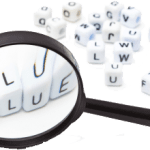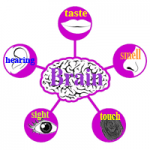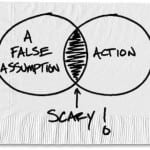 I dedicate a lot of time during my situational awareness programs ensuring that first responders understand how clues and cues serve as the foundation for developing and maintaining good situational awareness. We also spend considerable time making the connection of how strong situational awareness becomes the foundation for good decision making.
I dedicate a lot of time during my situational awareness programs ensuring that first responders understand how clues and cues serve as the foundation for developing and maintaining good situational awareness. We also spend considerable time making the connection of how strong situational awareness becomes the foundation for good decision making.
For the most part, clues and cues (information) at incident scenes are only beneficial if the recipient perceives them (sees, hears, feels, tastes or smells them), and equally important, the recipient must understand the meaning of the clues and cues (which is NOT automatic nor should it be presumed to be). But what about the clues and cues the responders cannot see, hear, feel, taste or smell? Turns out, they are important too. Let’s explore how missing puzzle pieces help form situational awareness.
Negative Clues and Cues
There are two kinds of clues and cues (information) that a responder with strong situational awareness needs to capture and understand – positive and negative clues and cues. In the context of this conversation, positive does not mean “good” and negative does not mean “bad.” Rather, positive means “present” and negative means “absent.”
The formation of situational awareness depends on both what you see, hear, feel, taste and smell… AND what you DON’T see, hear, feel taste and smell. As it turns out, the absence of information can be as important as the presence of information.
 When assessing an incident scene, an experienced responder expects to see and hear certain information. (Note: For the sake of brevity, all the senses are involved, but I will only reference seeing and hearing as these are the two predominant senses used in the formation of situational awareness at incident scenes.) What is seen and heard are termed the “positive” clues and cues. What the responder does not see or hear is termed the “negative” clues and cues.
When assessing an incident scene, an experienced responder expects to see and hear certain information. (Note: For the sake of brevity, all the senses are involved, but I will only reference seeing and hearing as these are the two predominant senses used in the formation of situational awareness at incident scenes.) What is seen and heard are termed the “positive” clues and cues. What the responder does not see or hear is termed the “negative” clues and cues.
It is important to note that in the context of this part of our discussion, the negative clues and cues are not seen and heard because they are not present. It is NOT because the responder failed to conduct a proper size-up (which can happen and I’ll discuss that later). Here, I am talking about a responder who, in the course of a proper size-up, notes the absence of clues and cues (information) that helps build stronger situational awareness.
For example, a responder who arrives on the scene of a reported residential dwelling fire and, on the completion of the size-up, notes there is smoke coming from the front of the house but no smoke coming from the back of the house. The absence of smoke in the rear (a negative clue) helps the responder better understand what is happening inside the structure. In this case, the absence of information strengthens situational awareness.
Filling In the Gap
Scenario: A crew arrives, sees smoke coming from the front and subsequently assumes nothing is happening on the backside of the structure. Thus, they do not complete a 360-degree size-up. The failure to complete the 360-degree size up leaves voids in the responders’ minds (blank spots, if you will, because the information is missing). Thus, the responders’ comprehension of what is happening is, naturally, flawed. Right? Not necessarily.
In the absence of factual information, the brain can evoke one of two responses. The first response could be bewilderment or confusion. The responder feels confused because of the missing information. This typically happens when the information that has been gathered does not make sense because the missing information leaves the picture of understanding (comprehension) incomplete.
 The second response, which is far more dangerous than the first, is that the brain can “fill in” the missing information – the missing puzzle pieces – with assumptions. This leaves the responder believing they have a complete and coherent understanding of what is happening. The responder may not even realize, at the moment, that they are making assumptions about the missing information. If the assumptions are accurate, the responder will be no wiser. It is only when the assumptions are inaccurate and, as a result, there is a consequential outcome that the responder may realize their assumptions were flawed.
The second response, which is far more dangerous than the first, is that the brain can “fill in” the missing information – the missing puzzle pieces – with assumptions. This leaves the responder believing they have a complete and coherent understanding of what is happening. The responder may not even realize, at the moment, that they are making assumptions about the missing information. If the assumptions are accurate, the responder will be no wiser. It is only when the assumptions are inaccurate and, as a result, there is a consequential outcome that the responder may realize their assumptions were flawed.
The assumptions (i.e., filling in of missing information) lead a responder to a perception of reality. That perception may not be the true reality. But it is, nonetheless, the reality in the mind of the responder – at least until TRUE reality replaces the perception. But it may then be too late.
Dr. Gasaway’s Advice
 Realize that anytime you assume the information to be factual, it creates a perception of reality that may be completely inaccurate. The completion of a proper 360-degree size-up vastly reduces the assumptions about what the responders are dealing with. It does not, however, completely eliminate the need to make assumptions because there will almost always be some factual information that cannot be seen even when a proper size-up is completed.
Realize that anytime you assume the information to be factual, it creates a perception of reality that may be completely inaccurate. The completion of a proper 360-degree size-up vastly reduces the assumptions about what the responders are dealing with. It does not, however, completely eliminate the need to make assumptions because there will almost always be some factual information that cannot be seen even when a proper size-up is completed.
The absence of clues and cues (e.g., nothing showing on the backside of the structure) is critical information that eliminates the need to assume there is nothing of consequence happening on the backside. Negative clues and cues – visually observing “nothing showing” is important and should not be assumed.
Your size up is your first, and often only, the opportunity to determine the problem before you apply your solutions. The application of solutions without understanding the complexity of the problem is a dangerous way to operate.
Action Items
 1. Discuss examples of negative clues and cues that can provide critical information that aids in the formation of situational awareness.
1. Discuss examples of negative clues and cues that can provide critical information that aids in the formation of situational awareness.
2. Search the Near Miss Reporting System, locate and discuss an incident where responder assumptions flawed situational awareness and contributed to a near-miss event.
3. Search the NIOSH Line of Duty Death Reports, locate and discuss an incident where responder assumptions flawed situational awareness and contributed to a line-of-duty death.
Near Miss Reporting System Website: http://www.nationalnearmiss.org
NIOSH Firefighter Fatality Investigations Website: http://www.cdc.gov/niosh/fire/
_____________________________________________________

If you are interested in taking your understanding of situational awareness and high-risk decision making to a higher level, check out the Situational Awareness Matters Online Academy.
CLICK HERE for details, enrollment options and pricing.
__________________________________
Share your comments on this article in the “Leave a Reply” box below. If you want to send me incident pictures, videos or have an idea you’d like me to research and write about, contact me. I really enjoy getting feedback and supportive messages from fellow first responders. It gives me the energy to work harder for you.
Thanks,

Email: Support@RichGasaway.com
Phone: 612-548-4424
SAMatters Online Academy
Facebook Fan Page: www.facebook.com/SAMatters
Twitter: @SAMatters
LinkedIn: Rich Gasaway
Instagram: sa_matters
YouTube: SAMattersTV
iTunes: SAMatters Radio
iHeart Radio: SAMatters Radio

That’s interesting that there are positive and negative cues for safety. I would think that if you stop hearing something or start hearing something that it could be a bad sign. I’ll have to consider getting someone to check it out if I ever have something that I don’t see or hear, but should in my workplace.